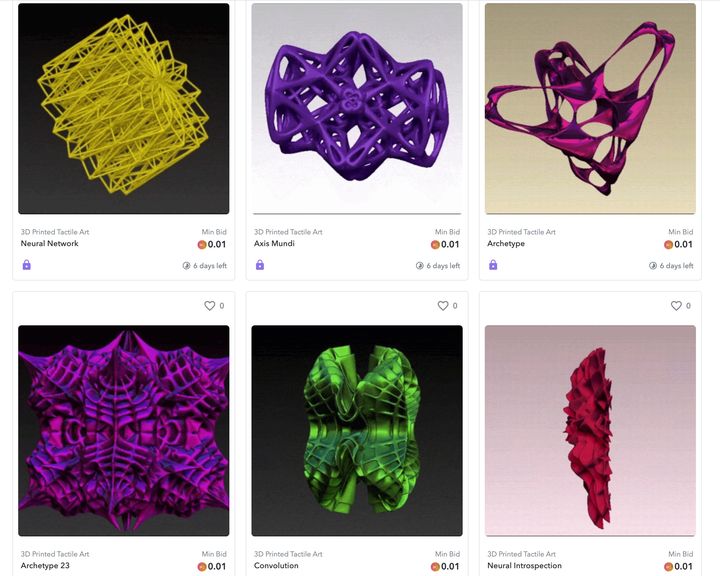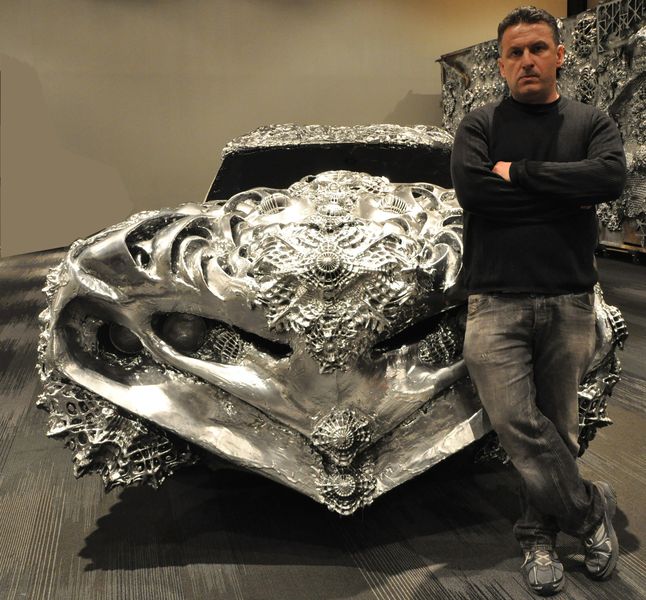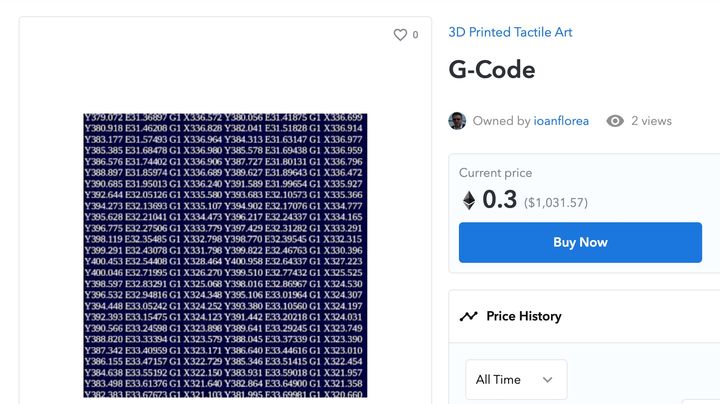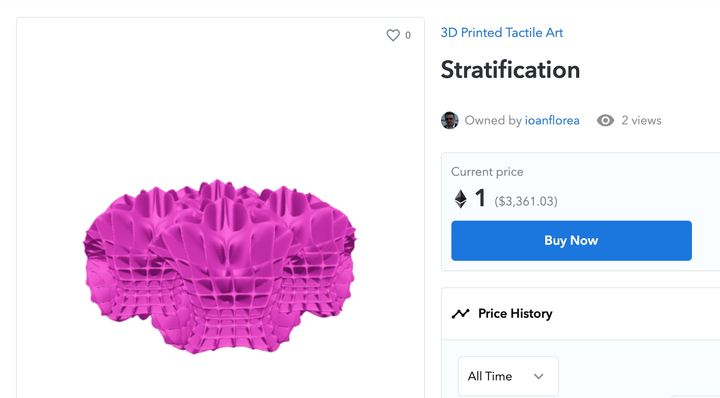
What might be the very first collection of 3D printed NFT art is now available.
Artist Ioan Florea has posted a collection of NFT 3D prints on OpenSea, a popular online exchange for NFTs.
What is an NFT?
An NFT is a cryptocurrency token that represents a digital artifact. These tokens are able to make full use of cryptocurrency capabilities, such as limiting the number of sales or copies, tracking owners, and paying royalties. This makes them attractive to artists, who up to now have had no proper means to achieve these functions.
For 3D printing this could be of great interest, because the design and execution files are in fact digital artifacts: they’re just files. That means they are easily incorporated into an NFT, either directly, or through a third party hosting site that holds the files. For this implementation, Florea is using OpenSea as the hosting service.
Sometimes NFTs are used for physical objects, which obviously are not digital. In this mode you’re really buying a type of “trading card” that represents the work. Not the object itself, but a collectible instead.
There are some challenges using NFTs for this purpose, however, and you might want to read our story on the Problems With NFTs in 3D Printing.
Ioan Florea NFTs
Ioan Florea has decided to experiment with 3D print NFTs and has opened up a selection of his unusual works.
Long-time Fabbaloo readers might recognize Florea, as he’s appeared in our pages previously. In 2013 he 3D printed an entire Gran Torino automobile, and in 2014 he developed a 3D printed mobile house. As you might gather, Florea is one for pushing the envelope of technology, and that’s likely why he might be the first 3D print artist to post a collection of NFTs for sale.

As of his writing, Florea’s NFT collection comprises 28 items, falling into two categories. One category is for the items themselves. If you were to buy them, it seems you’re gaining the “ownership” of the design; this is the “trading card” approach I mentioned above. There are a number of highly complex 3D printable designs in this category, as well as the aforementioned Gran Torino and Mobile House.

The other category is for actual GCODE files. I believe the idea here is to post the GCODE digital file and allow buyers to 3D print limited quantities of them, although this is not specified.
There are only a handful at this time, and it’s rather difficult to know what they represent. The images on these entries are literally a screenshot of some GCODE, and there is no useful description.
In at least one of these entries the word “test” appears, so it may be that Florea is still figuring out how to implement fully-functional GCODE NFTs. One GCODE NFT is listed as “G-Code file for Imago Mundi”, hinting at the nature of the 3D print.
Pricing for these items is posted in ETH, the cryptocurrency used on the Ethereum network. Some of the “trading card” items are listed at 0.1 ETH, which as of this writing (and watch out, the rates change dramatically all day long) about US$350. Others are posted for auction with minimum bids of 0.01 WETH (WETH is “wrapped ETH” and has the same value as ETH.) The GCODE entries are priced at 0.3 ETH, or about US$1000.
The priciest item is “Stratifaction”, at 1.00 ETH, or about US$3400.

I’m quite curious to see how this experiment proceeds, particularly for the GCODE versions. If it’s successful we could see a flood of very interesting 3D printable designs emerge from artists that were wary of publicly posting their works for fear they’d be copied. The NFT concept might allow them to successfully and securely market their designs to the public.
Via Ioan Florea
